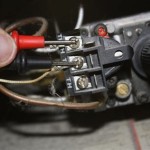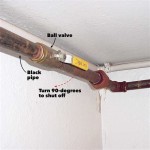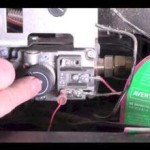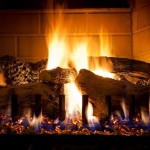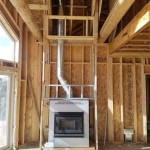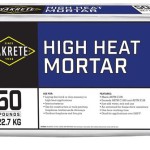Candice Olson Fireplaces: Analysis of Incident Reports
Candice Olson is a well-recognized name in interior design, known for her sophisticated and functional designs. While her portfolio spans various aspects of interior spaces, the integration of fireplaces has often been a signature element. These fireplaces, designed to be both aesthetically pleasing and practical, are subject to rigorous safety standards. However, like any appliance involving combustion, fireplaces can be vulnerable to incidents. Understanding and analyzing incident reports related to Candice Olson fireplaces provides valuable insights into potential risks, design limitations, and opportunities for improvement.
This analysis delves into the realm of incident reports associated with Candice Olson fireplaces, focusing on prominent patterns, common causes, and preventative measures that can be implemented to mitigate potential safety hazards. The goal is to offer a comprehensive view of fireplace safety, benefiting homeowners, installers, and manufacturers alike.
Common Causes of Fireplace Incidents
A thorough examination of incident reports often reveals recurring themes related to the causes of fireplace malfunctions and safety concerns. These reports categorize incidents based on the type of fireplace (gas, electric, wood-burning), the nature of the malfunction (flames out of control, carbon monoxide leakage, overheating), and the contributing factors. Some of the most commonly cited causes include improper installation, inadequate maintenance, fuel-related issues, and design flaws.
Improper installation is a frequent contributor to fireplace incidents. Fireplaces, particularly those involving gas lines or intricate venting systems, require precise installation according to manufacturer specifications and local building codes. Deviation from these guidelines can lead to gas leaks, improper combustion, and inadequate ventilation, all of which pose significant safety risks. For example, insufficient clearance between the fireplace and combustible materials, such as drywall or wood framing, can initiate a fire. Also, incorrectly sized or poorly secured gas lines can cause leaks, leading to explosions or carbon monoxide poisoning.
Inadequate maintenance is another prevalent cause of fireplace incidents. Regular cleaning and inspection of fireplaces are essential to ensure safe and efficient operation. Creosote buildup in wood-burning fireplaces is a major fire hazard. Creosote, a byproduct of incomplete combustion, is highly flammable and can accumulate within the chimney flue. Failure to regularly clean the chimney allows creosote to build up to dangerous levels, increasing the risk of a chimney fire. Similarly, gas fireplaces require periodic inspection of burners, vents, and gas lines. Dust, debris, or corrosion can impede proper combustion, leading to carbon monoxide production or gas leaks.
Fuel-related issues also contribute to fireplace incidents. Using the wrong type of fuel in a fireplace can result in incomplete combustion and the release of harmful gases. For example, burning treated wood in a wood-burning fireplace can release toxic chemicals into the air. Similarly, attempting to use non-approved fuels in gas fireplaces can damage the appliance and create dangerous conditions. It is crucial to adhere strictly to the manufacturer's recommendations regarding fuel types and usage.
Design flaws, although less frequent than the other causes, can also lead to incidents. If the design of the fireplace doesn't adequately address ventilation, heat dissipation, or combustion efficiency, it can create inherent safety risks. Furthermore, poor material choices can also contribute to problems. Materials that are not heat-resistant or are prone to degradation can fail under normal operating conditions, leading to leaks, cracks, or structural failures.
Analyzing Specific Incident Report Categories
Incident reports related to Candice Olson fireplaces often fall into specific categories, each requiring a distinct analysis to identify underlying causes and potential solutions. These categories include incidents involving gas fireplaces, wood-burning fireplaces, and electric fireplaces. Understanding the characteristics of each category allows for targeted preventative measures.
Gas fireplace incidents frequently involve gas leaks and carbon monoxide poisoning. Gas leaks can occur due to corrosion of gas lines, loose connections, or faulty valves. Even small gas leaks can pose a significant explosion risk. Carbon monoxide poisoning is a silent threat. Carbon monoxide, an odorless and colorless gas produced by incomplete combustion, can quickly build up to dangerous levels in poorly ventilated spaces. Defective burners, blocked vents, or insufficient air supply can all contribute to carbon monoxide production. Incident reports in this category often highlight the importance of regular gas line inspections, carbon monoxide detectors, and proper ventilation.
Wood-burning fireplace incidents predominantly involve chimney fires and smoke inhalation. As discussed earlier, creosote buildup is a major factor in chimney fires. Regular chimney cleaning is essential to remove creosote and prevent these dangerous events. Smoke inhalation is another common concern. Poor drafting, blocked chimneys, or improper damper operation can cause smoke to back up into the living space, exposing occupants to harmful pollutants. Incident reports in this category emphasize the need for annual chimney inspections, proper damper operation, and the use of seasoned firewood.
Electric fireplace incidents often involve overheating and electrical malfunctions. Electric fireplaces, while generally safer than gas or wood-burning fireplaces, are not immune to incidents. Overheating can occur if the fireplace is used continuously for extended periods or if the vents are blocked. Electrical malfunctions, such as short circuits or faulty wiring, can also lead to fires. Incident reports in this category emphasize the importance of following manufacturer's instructions, avoiding the use of extension cords, and ensuring adequate ventilation.
Preventative Measures and Safety Recommendations
Based on the analysis of incident reports, a number of preventative measures and safety recommendations can be implemented to reduce the risk of fireplace-related incidents. These measures address installation practices, maintenance routines, fuel selection, and the use of safety devices.
Proper installation is paramount. All fireplaces, regardless of type, should be installed by qualified professionals according to manufacturer specifications and local building codes. This includes ensuring proper clearances from combustible materials, secure gas line connections, and adequate ventilation. Homeowners should verify that the installer is licensed and insured and should retain a copy of the installation manual for future reference. Furthermore, regular inspections by qualified professionals can help identify potential problems before they escalate into safety hazards.
Adhering to a rigorous maintenance schedule is vital for safe fireplace operation. For wood-burning fireplaces, annual chimney cleaning is essential to remove creosote and prevent chimney fires. Gas fireplaces require periodic inspection of burners, vents, and gas lines by a qualified technician. Electric fireplaces should be regularly inspected for electrical malfunctions and overheating. All fireplaces should be inspected for signs of damage, such as cracks, leaks, or corrosion. Promptly addressing any issues can prevent them from developing into more serious problems.
Selecting the appropriate fuel is crucial for safe and efficient combustion. Only use the type of fuel recommended by the fireplace manufacturer. Never burn treated wood or other non-approved materials in a wood-burning fireplace. For gas fireplaces, ensure that the gas supply is clean and free from contaminants. Proper fuel storage is also important. Store firewood in a dry, well-ventilated area away from the house. Keep gas cylinders in a safe location, away from heat and ignition sources.
The use of safety devices is a critical component of fireplace safety. Carbon monoxide detectors should be installed in all homes with fireplaces, regardless of the type of fireplace. These detectors provide an early warning of carbon monoxide buildup, allowing occupants to evacuate the premises. Smoke detectors should also be installed in the vicinity of the fireplace to provide an early warning of a fire. Fire extinguishers should be readily available and easily accessible in case of a fire. Furthermore, fireplace screens or doors can help prevent sparks and embers from escaping the fireplace, reducing the risk of fires spreading to surrounding materials.
Educating homeowners about fireplace safety is also essential. Homeowners should be familiar with the operating instructions for their fireplaces and should understand the potential risks associated with improper use or maintenance. They should also be aware of the warning signs of fireplace malfunctions, such as gas leaks, smoke backdraft, or unusual noises. Providing homeowners with clear and concise safety information can empower them to take proactive steps to prevent fireplace incidents.
The analysis of Candice Olson fireplace incident reports provides valuable insights into potential safety hazards and preventative measures. By understanding the common causes of fireplace incidents, analyzing specific incident report categories, and implementing preventative measures and safety recommendations, homeowners, installers, and manufacturers can work together to create safer and more enjoyable fireplace experiences. Continuous monitoring of incident reports is important to adapt safety strategies and prevent future accidents.

105 Candice Olson Living Room Design

Candice Olson Master Bedroom Ventless Fireplace

Candice Tells All Basement Fireplace Becomes Focal Point Of Retreat The Times Herald

Candice Olson A Restful Monochromatic Bedroom Design

Kids Playroom Becomes Fun For All Ages Orange County Register

Candice Olson Master Bedroom Ventless Fireplace

A Great Room Finally Lives Up To Its Name Orange County Register
What Happened To Candice Olson Why The Divine Design Host Disappeared From

Haywoodn8226 2 D Digital Imaging Spring 2024

Candice Olson S New Book Chronicles Favorite Design Challenges Reading Eagle
Related Posts

